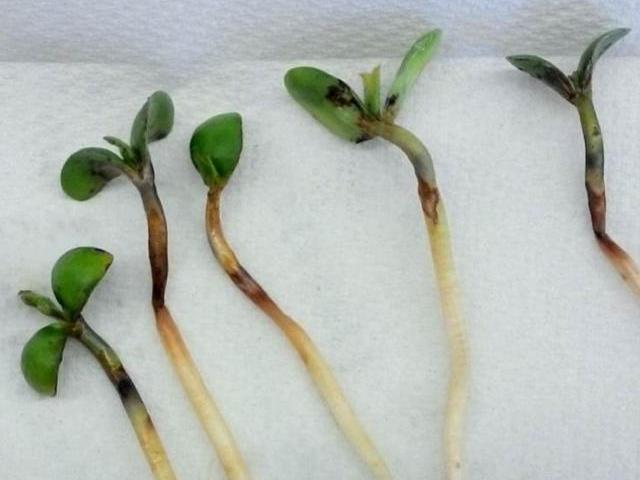Although some Disney characters love cold, I think it is safe to say soybeans are not always a fan. Let’s take a look at the symptomology of soybeans impacted by a hard frost and/or freeze and separate out the look-alikes.
Scouting
Though you may want to rush out before the frost is burned off or shortly after to assess damage, it may not be that quick and easy. In many cases damage from frost will not show up for 3-4 days after a frost has occurred. At the time of this article being written, the forecast for the next 14 days was cool with temperatures in the mid-to-low 50s, which is not ideal for early soybean growth and development. Because of these cooler temperatures, it may take a few extra days to know exactly how soybean stands are going to look after the recent frost. Field edges, along waterways and low spots in the field are all key areas to watch since grass along the edge hinders the soil’s ability to radiate enough heat to protect the seedlings.
Timing
Growth stage and injury severity go hand in hand for a few reasons. VE (newly emerged) to VC (cotyledon leaves open) are probably the most tolerant growth stages for a couple different reasons. At this young stage, plants are low to the ground and high in solutes. The ground can offer a bit of a temperature buffer by radiating heat and protecting the shorter plants. Conventional tilled ground radiates quite a bit more heat than does high residue, no-till, or cover-cropped acres. Also, with these leaves being filled with a large amount of solutes, the freezing point inside the tissue is lower and closer to 28o F vs. the standard temperature for water of 32o F. Just because there was frozen water on the outside of the leaf, doesn’t necessarily mean it was frozen on the inside.
 Symptomology
Symptomology
Do you know what you’re looking at? Is that truly frost damage? Frost damage presents itself as narcotic (brown to dark brown) tissue that can often stay around the leaf edges. If severe enough, the discolored tissue can affect a majority of the cotyledons and even the hypocotyl (stem). As you can see in the picture, the dark lesions around the hypocotyl are pinching in some plants and only slight in others with the level of severity in the cotyledons similar. The dead tissue is mainly around the edges of the cotyledons. These seedlings are likely to survive and put on new growth.
Another issue we see this time of year is herbicide injury from PPO herbicides. PPO damage presents itself similarly, but can have different outcomes. One way to know is if your plants were not emerged yet, you are likely not looking at frost damage.
Proper diagnosis and patience will ultimately affect the decisions made after an environmental event such as frost. Seeing healthy tissue is always encouraging and just because you see necrotic tissue does not mean that the soybeans are done for. Having a little extra patience to see the new tissue emerge can save a lot of time and money in already tight economics.


 and then
and then